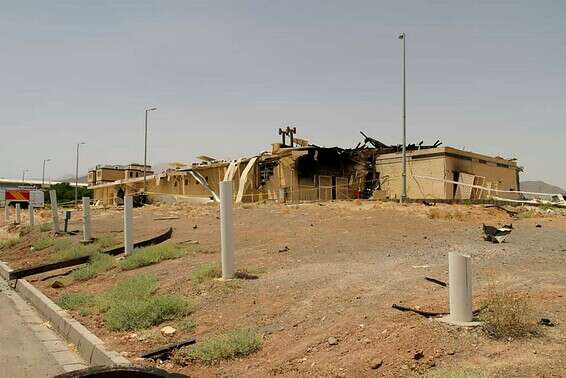The sabotage was aimed at advanced centrifuges, which should have allowed a rapid breakthrough towards the nuclear.
Satellite image of the facility was shelved in Iran
Photo:
IP
It is difficult to overstate the importance of advancing the advanced equipment in the Natanz enrichment facility: not the damage done, not its implications for the Iranian nuclear program, nor its widespread implications regarding Iran's possible response to Israel.
Reports coming in the last two days from Iran are contradictory. First, an explosion was reported that caused damage to the plant in which advanced centrifuge experiments were carried out, and then it was alleged that it was a cyber attack that caused a fire. It seems worthwhile to rely on the reliable sources of the New York Times, who were able to report that the incident was the result of a bomb blast that had been planted on the scene.
Assuming the sabotage was indeed intentional, it is a great success for the attacker: intelligence gathered on the secret facility, knowledge of what is and operates, the ability to secretly penetrate it and deposit the cargo in a strategic location that will cause maximum damage to sensitive equipment. The surprised and hesitant reactions from Iran show not only the astonishment that the secret facility was exposed and damaged, but also the fog as far as who was hurting it and how exactly.
Iran: An explosion at the al-Zarqan power plant in Ahwaz
Even before all the details of the sabotage and damage were discovered, it seems possible that this may be the most severe blow to the Iranian nuclear program, since the centrifuges in the same facility in Netanz since 2010 were disabled. At the time, this downtime turned out to be a particularly sophisticated cyber attack, carried out using the Staxnet computer worm. According to international media reports, the worm was jointly developed by Unit 8200 in the U.S. Army and National Security Agency (NSA). She then hit the centrifugal mornings and caused them to collapse without giving evidence, and she operated for close to a year until exposed.
The sabotage is also now aimed at centrifuges - far more advanced than those damaged a decade ago. In Iran, these advanced centrifuges were experimenting - which should allow them to burst at the nucleus as soon as a decision was made - with the intention of installing them in the underground facility in the future.
The sabotage now does not only disrupt the Iranian plan to put the advanced centrifuges into action. It also reveals to the world - again - the effort that Iran is investing in its nuclear project as its economy collapses under the sanctions and the Corona crisis and its policies are met with intense internal criticism.
Naturally, the accusing finger in Tehran was pointed at Israel as being responsible for the attack. In Israel, in recent months, concerns over Iran's nuclear activity have been monitored in recent months, accelerated as a counter-response to the US withdrawal from the nuclear agreement and the economic sanctions it imposed on Tehran. In the former case, this seems to be a malfunction, but this time, however, the incident appears to be a deliberate attack, and if so, Iran may seek revenge.
Iran's fastest way to harm Israel, if indeed it is behind the attack, is through its affiliates operating in Syria. While the strength of these militias has recently been eroded by a series of assaults attributed to Israel, which have also been exterminated, according to foreign publications, it is likely that similar weapons are still on Syrian soil or can be flown in a short time.
For the past two years, Iran and its airstrikes have tried to strike Israel several times with rockets or unmanned aerial vehicles launched into Israeli territory on the Golan Heights. In all cases, the Air Force managed to intercept the threat without causing any damage, but never resilience. The latest incident - and the overt accusations directed at Israel - require at least raising vigilance and alertness on the northern border, in order to promote every possible evil.
Iran has other options to respond, either through Hezbollah from the Lebanese border (low likelihood) or by terrorist attack on an Israeli target abroad. Only, and time and again their plans are exposed - and disrupted.

